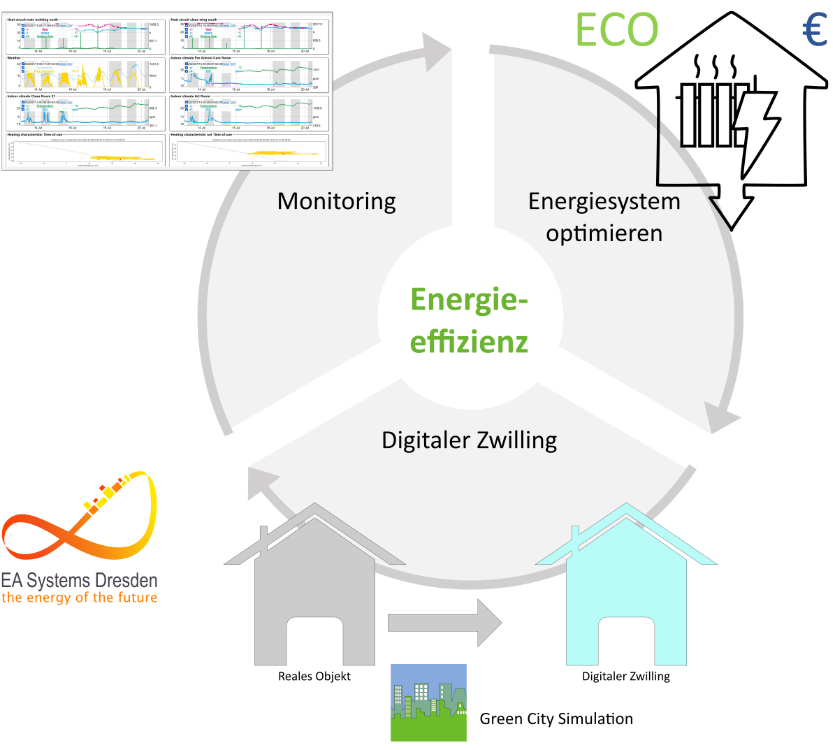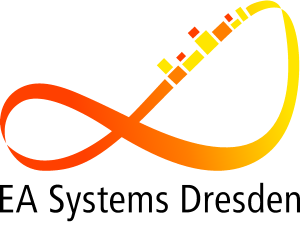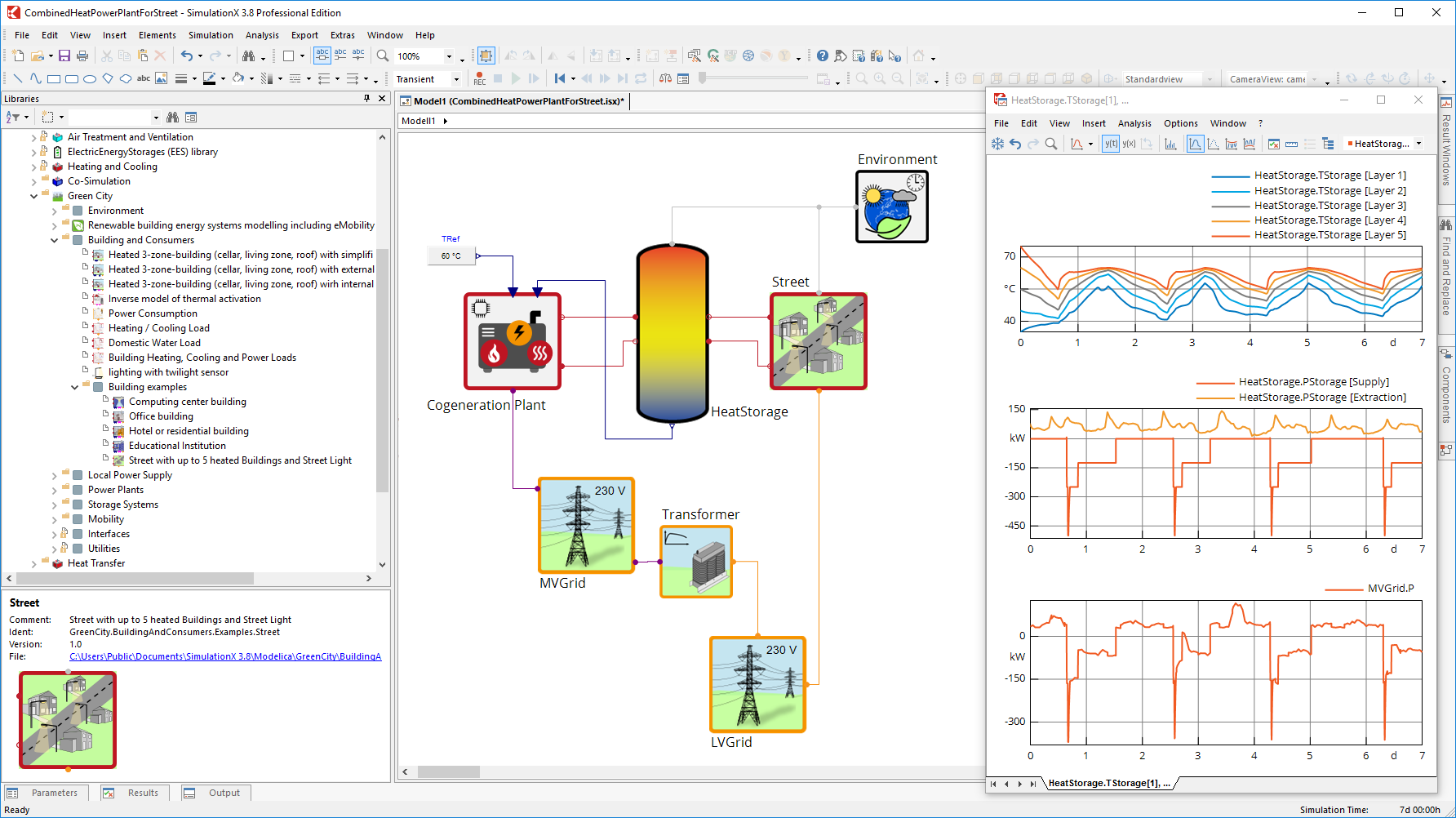In a digital world, digital solutions are needed. EA Systems Dresden GmbH has been dealing with the topic of digitization of systems and processes from the very beginning and has made the so-called Digital Twin an important component in the mapping, conceptual design, optimization of energetic processes as well as its own way of working. The concept behind the Digital Twin is trivial: A material/immaterial component of the real system or a real system itself – regardless of whether it already exists or not – is modeled for the digital world in a tangible and applicable way. The modeled twin can now be tested for all possible scenarios. The results are valid and can be transferred to the real system without having to intervene in the respective real system.

Using the specially developed Green City simulation library for SimulationX, the engineers at EA Systems Dresden GmbH are modeling a digital twin of the real system. Site-specific and structural features, CHP (combined heat and power) and sector coupling are taken into account. Site- and customer-specific model developments as well as the integration of renewable energies are no problem. After completion of the digital twin, it can now be managed in the long term, adapted and supplemented according to the situation and requirements.
The model shown in the figure (below) is the digital twin of a street with 5 residential buildings. It shows a simplified heating, hot water and electrical energy consumer, which is supplied by a combined heat and power plant. A heat storage tank serves as a buffer for heat load peaks. A wide variety of analyses and investigations could then be carried out on the digital twin. In this case, the energy demand was simulated in order to determine whether it is covered.
Benefits
In summary, the Digital Twin thus offers…
- planning work in TBE (Technical Building Equipment)
- Model-based evaluation and optimization of energy systems
- integration of e-mobility & charging infrastructure as well as
- integration of energy storage units & user behavior Comparison of model parameters by means of measured values & statistics with import/export of relevant measured data
- Comparison of energy demand/consumption as well as operating & investment cost comparison
- SiL & HiL test runs & individual model development and system integration
- Connect your own controller applications with the open-standard Modelica ® interfaces of our Green City components

